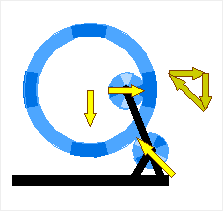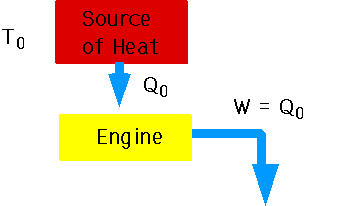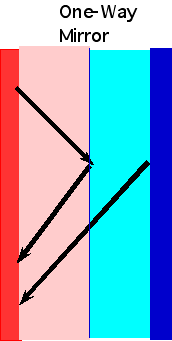


| We would be able to arrange for a complicated system of forces to keep things moving forever. e.g a wheel which turns for ever |  |
 |
(these examples come from Randall Woods of BCIT)
| Or another variety which also turns for ever |  |
 |
| and here is a modern version of the overbalancing wheel |  |
 |
.
A very important idea that runs all through science
Energy is always conserved
Heat ⇔chemical ⇔ potential ⇔ nuclear ⇔ kinetic
Conservation of energy tells you not even to try to make a perpetual motion machine! (and the US patent office requires a working model...!). However, that doesn't stop people from trying.. These come from two fascinating sites. See here (by Randall Woods) and here (by Eric Dennis)
More subtle:
For example, why can't we have (e.g) a boat that takes in water at 20°C,
extracts some heat, turns it into energy and exhausts cold water 
Doesn't violate first law
| Or better, why can't we have |  |
Here is a way to do it in practice:
 |
Two plates of a flat black material (dark red and blue in the
figure) with one-way mirror between them (at the vertical center
line). Radiation from the left plate will be reflected back and reabsorbed. Light from the right plate passes through the
one-way mirror to be absorbed by the other plate. The blue plate on the right continuously loses energy while the other will continuously gain energy. The resulting spontaneous separation of thermal energy will result in the creation of hot and cold reservoirs to which a heat engine can be connected and operated indefinitely without the need of external energy input. |
Shares for investment in the company will be available after the class.
Cannot build a heat engine working in a closed cycle which removes heat from one place and converts it entirely into useful work
Finally an idea that doesn't violate either the First or Second Law: Cold Fusion